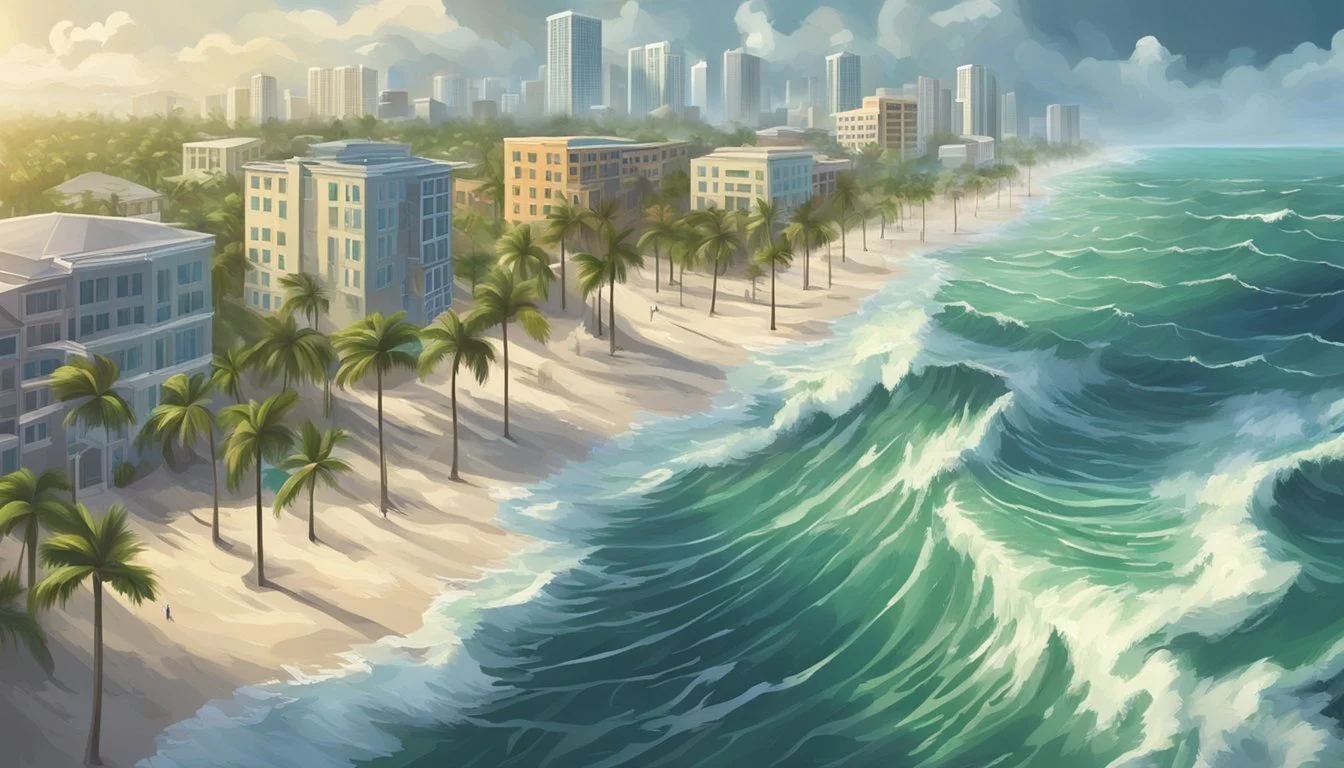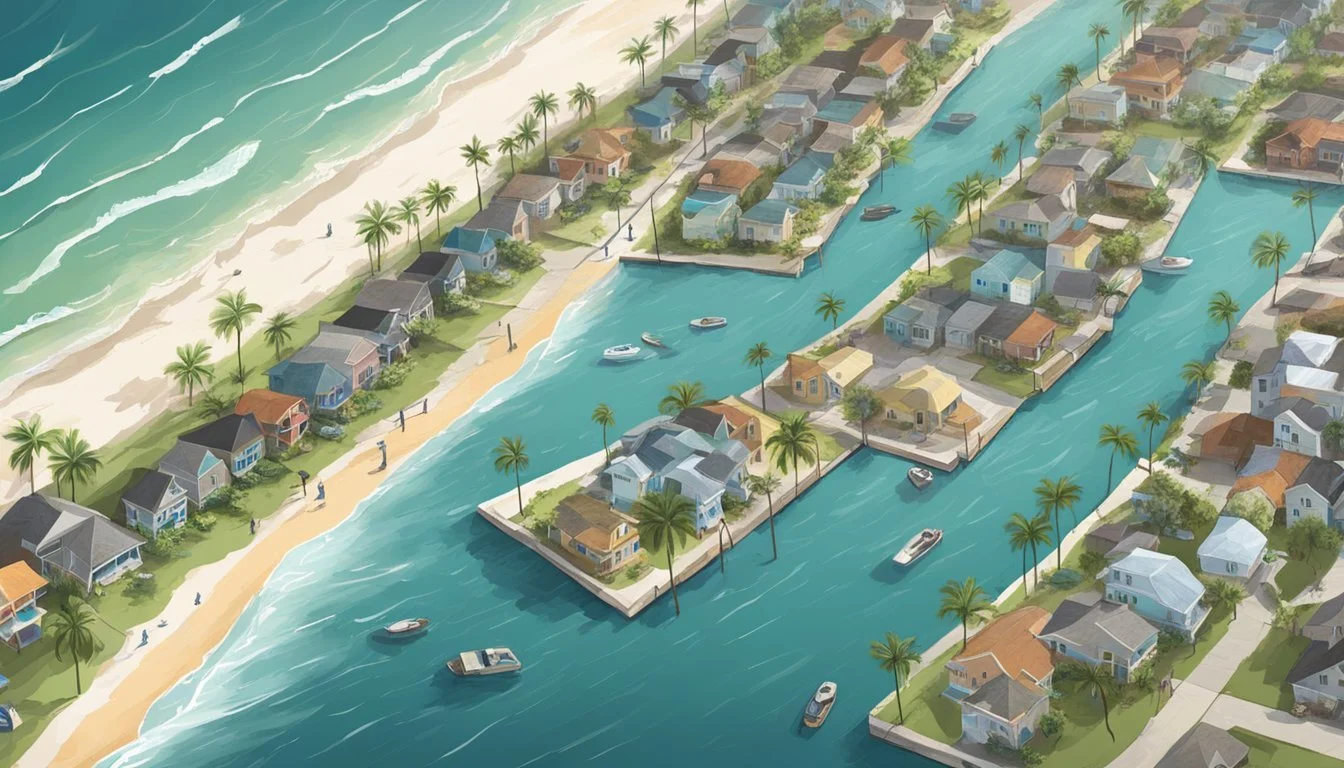6 Hurricane Irma Documentaries That Showcase Florida's 2017 Resilience
A Look at Survival and Recovery
Hurricane Irma, one of the most powerful Atlantic storms in recorded history, struck Florida in September 2017. The Category 4 hurricane caused widespread destruction across the state, testing the resilience of its communities. Documentaries capturing the impact and aftermath of Hurricane Irma provide valuable insights into Florida's response to this natural disaster.
These films showcase the preparation, evacuation, and recovery efforts undertaken by Floridians in the face of Irma's devastating force. From Naples to the Florida Keys, cameras rolled as residents boarded up homes, sought shelter, and later emerged to rebuild their lives. The footage serves as a testament to the strength and determination of those affected by the storm.
Six notable Hurricane Irma documentaries offer viewers a comprehensive look at the storm's progression and its lasting effects on Florida. These films not only document the physical damage caused by Irma but also highlight the human stories of courage, community support, and resilience that emerged in its wake.
The Path of Irma
Hurricane Irma carved a devastating trail across the Caribbean and Florida in September 2017. Its powerful winds and storm surge left widespread destruction in its wake.
Formation and Early Tracking
Hurricane Irma formed off the coast of Africa on August 30, 2017. It rapidly intensified into a Category 3 hurricane within 24 hours. By September 5, Irma had become a Category 5 storm with sustained winds of 185 mph.
The hurricane maintained this intensity for a record-breaking 37 hours. Irma's path took it through the Leeward Islands and towards the Greater Antilles. Meteorologists closely monitored its trajectory as it approached the Caribbean.
Caribbean Devastation
Irma struck the Caribbean islands with catastrophic force. Barbuda faced near-total destruction, with 95% of structures damaged or destroyed. The storm battered Saint Martin, Anguilla, and the British Virgin Islands.
Puerto Rico avoided a direct hit but still suffered significant damage. Over 1 million residents lost power. Cuba experienced severe flooding and wind damage along its northern coast.
The hurricane's impact on the Caribbean was unprecedented in its scale and intensity.
Impact on Florida's West Coast
Irma made landfall in the Florida Keys on September 10 as a Category 4 hurricane. It then moved up Florida's west coast, weakening to a Category 3 storm.
Naples and Marco Island faced a 6-foot storm surge. Miami experienced extensive flooding and power outages. The storm's eyewall passed over Naples, causing widespread wind damage.
Irma's size meant its effects were felt across the entire state. Over 6.5 million Floridians evacuated, the largest evacuation in the state's history. The hurricane caused significant damage to agriculture and infrastructure.
Meteorological Analysis
Hurricane Irma was an exceptionally powerful Atlantic hurricane that reached Category 5 intensity. It maintained peak winds of 185 mph for 37 hours, setting a record for the longest-lasting storm of that strength.
Profile of a Category Five Hurricane
Category 5 hurricanes have sustained winds exceeding 157 mph. Irma's peak intensity reached 180 mph, placing it among the strongest Atlantic hurricanes on record. Its minimum central pressure dropped to 914 millibars.
The storm's eye measured 23 miles in diameter. This large eye allowed Irma to maintain its extreme intensity for an extended period. Meteorologists tracked the hurricane's development using satellite imagery and hurricane hunter aircraft.
Irma's size was also notable. Hurricane-force winds extended up to 80 miles from the center, while tropical storm-force winds reached 220 miles outward.
Hurricane Irma's Winds
Irma produced devastating winds across the Caribbean and Florida. The strongest measured gust was 199 mph on Sint Maarten. In the Florida Keys, Big Pine Key recorded a gust of 120 mph.
Wind damage was extensive. The hurricane's powerful winds:
Stripped vegetation
Damaged or destroyed buildings
Overturned vehicles
Caused widespread power outages
Storm surge combined with the winds to produce severe coastal flooding. In the Florida Keys, storm surge reached 8-10 feet above ground level in some areas.
Irma weakened before landfall in Florida but remained a dangerous major hurricane. It made landfall as a Category 4 storm with 130 mph winds.
Impact Assessment
Hurricane Irma's effects on Florida and the Caribbean were extensive and long-lasting. The storm caused widespread destruction, flooding, and economic losses across multiple regions.
Damages Across The State
Hurricane Irma inflicted significant damage on Florida's infrastructure and property. The storm affected 6.5 million homes and businesses, with power outages impacting 4.4 million customers. Wind gusts toppled trees and power lines, while storm surge and flooding inundated coastal areas.
Key impacts included:
Severe damage to buildings and homes
Destruction of crops and agricultural land
Damage to roads, bridges, and airports
Extensive beach erosion along the coast
The financial toll was substantial, with total damages in Florida estimated at over $50 billion.
Storm Surge and Flooding
Irma's storm surge and heavy rainfall caused extensive flooding across Florida. Coastal areas experienced storm surge up to 8 feet in some locations. Miami and other parts of South Florida saw significant urban flooding.
Notable flood impacts:
Overflowing rivers and streams
Inundation of low-lying neighborhoods
Damage to coastal properties and infrastructure
The flooding disrupted transportation, forced evacuations, and left many areas underwater for days after the storm passed.
The Aftermath on the Caribbean Islands
Caribbean islands in Irma's path suffered catastrophic damage. The storm's intense winds and storm surge devastated infrastructure, homes, and natural environments across multiple nations.
Impacts on specific islands:
Barbuda: 95% of structures damaged or destroyed
Puerto Rico: Widespread power outages and water shortages
U.S. Virgin Islands: Severe damage to homes and critical facilities
Recovery efforts were hampered by limited resources and the isolation of many affected areas. Some islands faced years of rebuilding to restore basic services and infrastructure.
Response and Recovery
Hurricane Irma's impact on Florida in 2017 prompted swift action from emergency services and inspired remarkable community resilience. The response efforts focused on immediate safety and rescue operations, while recovery initiatives aimed to rebuild and strengthen affected areas.
Emergency Services and First Responders
Emergency services sprang into action as Hurricane Irma approached Florida. Mandatory evacuations were issued for vulnerable areas, including parts of Naples. First responders worked tirelessly to ensure public safety before, during, and after the storm. Police, firefighters, and medical personnel conducted rescue operations in flooded neighborhoods.
The Coast Guard deployed ships and aircraft for search and rescue missions. FEMA coordinated with state and local agencies to provide essential supplies and temporary shelters. Utility crews from across the country arrived to restore power to millions of affected homes and businesses.
Community Resilience and Volunteering
Florida's communities demonstrated remarkable resilience in the face of Hurricane Irma's destruction. Neighbors helped neighbors clear debris and repair damaged homes. Local organizations and churches transformed into distribution centers for food, water, and supplies.
Volunteer groups mobilized to assist with cleanup efforts and provide emotional support to affected residents. The American Red Cross deployed thousands of volunteers to operate shelters and deliver aid. Many Floridians opened their homes to displaced families, showcasing the state's strong sense of community.
Local businesses played a crucial role in the recovery process. Some restaurants provided free meals to first responders and those in need. Hardware stores prioritized the distribution of essential supplies for rebuilding efforts.
Preparation and Future Mitigation
Hurricane Irma's impact on Florida in 2017 prompted significant improvements in disaster preparedness and resilience strategies. Enhanced evacuation procedures and stronger building codes emerged as crucial elements in safeguarding communities against future storms.
Evacuation Procedures
Florida implemented more efficient evacuation protocols after Hurricane Irma. Officials refined traffic management plans, designating specific routes and implementing contraflow lanes to expedite evacuations. The state also improved communication systems, utilizing social media and emergency alert networks to disseminate timely information.
Authorities established clearer criteria for mandatory evacuations, focusing on vulnerable coastal areas and flood-prone regions. Evacuation shelters were upgraded and increased in number, with better provisions for people with special needs. Many counties partnered with transportation services to assist those without personal vehicles.
Infrastructure and Building Codes
Post-Irma assessments led to stricter building codes across Florida. New construction now requires impact-resistant windows, reinforced roofing, and elevated structures in flood-prone areas. Existing buildings underwent retrofitting to enhance storm resilience.
Critical infrastructure saw significant upgrades. Power grids were fortified with underground lines and smart technologies to minimize outages. Improved drainage systems and seawalls were installed to mitigate flooding risks.
The state invested in advanced weather monitoring systems and predictive modeling tools. These enhancements allow for more accurate forecasting and targeted preparations. Florida also increased funding for mitigation projects, recognizing that every dollar spent on prevention saves multiple dollars in potential damages.




